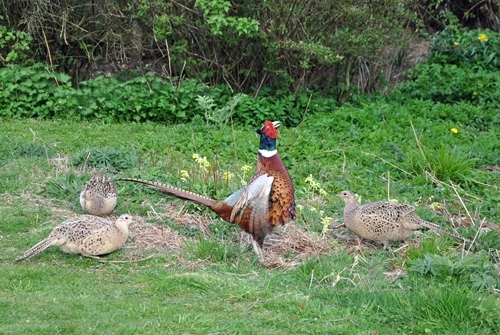
Following the disastrous bird flu pandemic that so heavily impacted the current shooting season – not to mention the increased cost of running a shoot – Richard Leach of Keepers Choice runs through the best practises for feeding the laying hen, with every poult seemingly worth its weight in gold…
With input costs remaining stubbornly high, and a genuine shortage of birds this year, ensuring that breeding birds are fed and looked after correctly has seldom been so important – giving more value than ever to every healthy chick that hatches.
Topping the priorities – even above feeding and habitat – is the selection of laying stock. For example, when catching-up, it is useful to condition score birds from 1 (very thin) to 5 (very fat). A score of 3 - 3.5 will help ensure optimum results; and the target weight should be around 1 - 1.1kgs. Weighing a selection of the birds from the batch is also advised to help tailor diet requirements more accurately.
Feed Rations
Generally, before moving onto a specific breeder ration, birds will be on either a low protein maintenance diet or wheat, either is fine. These are often referred to a pre-breeder diets.
From four weeks prior to laying, the diet should be changed to a more appropriate breeder ration. This is to be fed alongside soluble grit or oyster shell to help slow the passage of calcium in the gut, helping to provide an uninterrupted supply of calcium. Mixing the ration with the soluble grit is likely to result in decreased appetite, so this should be avoided.
Breeder rations contain higher levels of vitamins and minerals, which are just as important as protein and energy for healthy bird development (hatchability, egg quality, fertility, chick development, mortality and even feathering are all reliant on a varied and constant supply of vitamins and minerals).
The Keepers Choice breeder ration, for example, contains a broad range of nutritious, digestible feed materials, as well as specifically formulated mineral supplements -
- Fish oil (Omega 3 fatty acids) are added to the ration to help promote general heath and fight off disease.
- Vitamin E and selenium, both of which contains antioxidant properties and can help with chick quality, fertility and hatchability.
- Digestibility enhancer enzymes are included to encourage and improve feed utilisation.
- Genex is added to optimise feed digestion and nutrient absorption.
- Calcium is included as a key component of the egg and shell production, with uptake facilitated by added levels of vitamin D.
Much like humans, there are also certain essential amino acids that cannot be produced by the bird – such as methionine – which are also included in the ration.
A conducive environment
Getting the breeder ration right is essential, but if birds aren’t kept in a suitable environment, then the full value of that breeder ration will not be realised.
Water points are crucial: in any pen, there should be several – the more, the better! The water supplied from the drinkers needs to kept fresh and clean. This is always important, no matter what point of the cycle the birds are at, but at the breeding stage it carries even greater significance. If water points get dirty and muddy, they are likely to become sources of infection.
The same thing goes for the feeders. To prevent low intake, ensure there is plenty of space for the birds to feed. Low intake will result in lower body weights and, in turn, lower egg production. Much like the drinkers, if the area around the feeders becomes dirty, this will breed germs and infection. Both drinkers and feeders must be removed, cleaned and put back at a new site within the pen.
Laying Weight
After four weeks on a good breeder ration, hens should be in prime condition. At the time of laying, we would expect hens to be somewhere close to 1.25kg.
A wormer should be used as required, and those in need should seek veterinary advice as required – always sooner rather than later!
From our research over the years, the results of feeding a high performing layer diet are clear. We would expect an increase in egg production and hatchability of up to 1%, which results in the production of 30 more chicks per 100 hens.
Keepers Choice supply a specific laying diet for pheasants, partridge and duck
